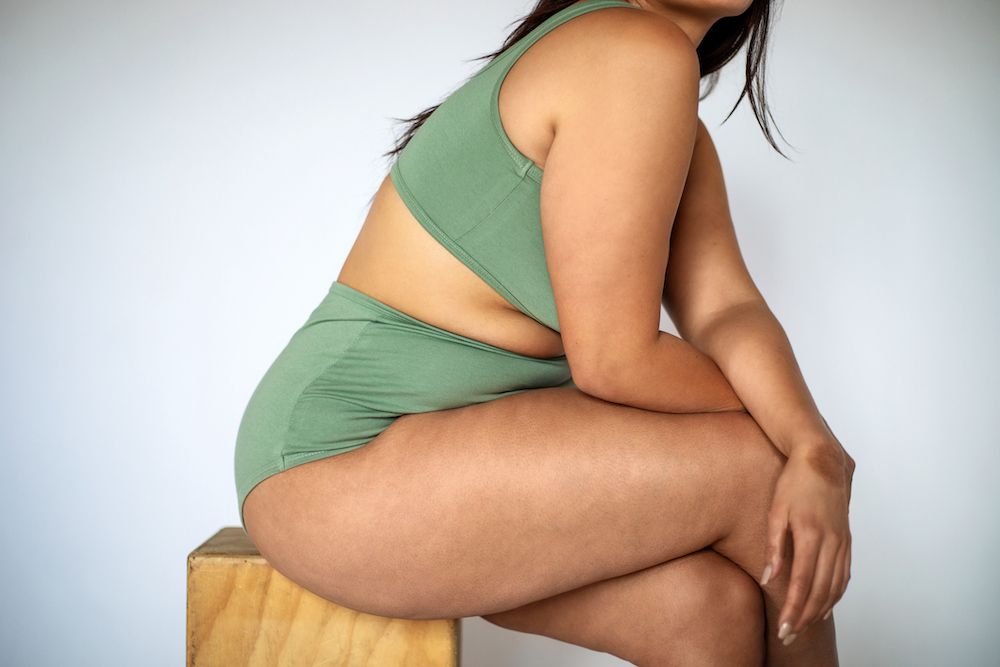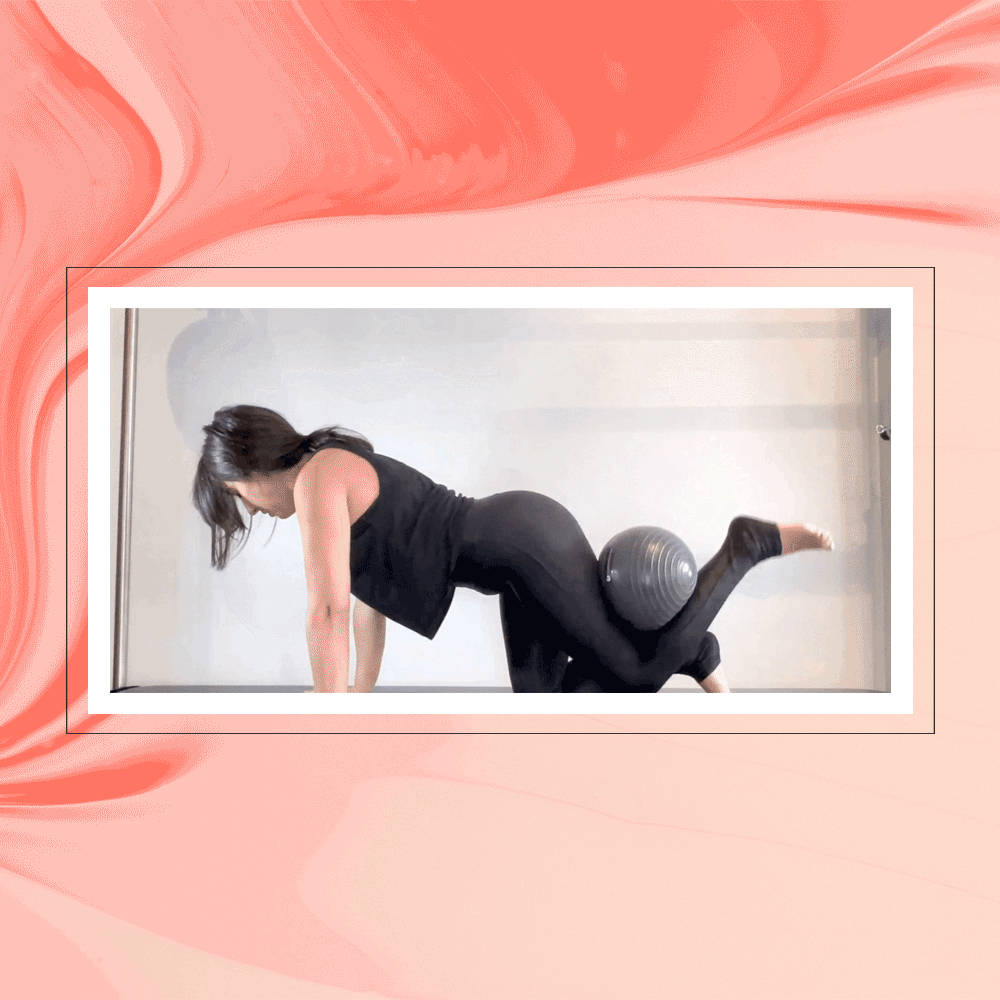How to Identify, Treat, and Prevent Stubborn Subclinical Acne
Have you ever woken up one day only to walk in front of a mirror and notice a new, small, flesh-colored bump somewhere on your face or body? Chances are it could be subclinical acne (also known as comedonal acne). This type of breakout can appear anywhere on your body. It can be difficult to decipher if it’s the early stage of a soon-to-be whitehead, or if it’s something else altogether. For this reason, we chatted with a few dermatologists to discuss everything there is to know about subclinical acne. After all, something so common should be well understood.
What Is Subclinical Acne?
According to cosmetic dermatologist Dr. Michele Green, subclinical acne is superficial acne that lies just below the skin. “It is also known as comedonal acne,” she explains.
Comedonal acne refers to comedones—perhaps you’ve heard of them. That’s because, as board-certified dermatologist Dr. Claire Chang points out, in dermatology, doctors more often label these skin-colored bumps—which are a form of non-inflammatory acne—as comedones, not subclinical acne.
Due to the misnomer, folks often think that subclinical acne actually refers to deeper, cystic bumps that lie under the skin. In reality, it’s just another term for comedones. Now that that’s cleared up, let’s chat about what causes subclinical acne in the first place.
Causes and Prevention of Subclinical Acne
Subclinical acne is caused by many of the same triggers as other forms of acne. They are as follows:
- Poor Hygiene: Allowing sweat and bacteria from your workout or the day to settle into your pores can lead to clogs and potential breakouts: “Failing to take a shower and wash your face after a workout or washing your face before going to bed can lead to subclinical acne,” Green explains.
- Stress: While stress does not directly cause acne, Green admits that it can exacerbate it. “If you are already acne-prone, stress can make your acne worse,” she says. “Acne is an inflammatory disease exacerbated by hormones released during stress which increase inflammation.” For this reason, it’s important to mitigate stress not only for your mind but your complexion.
- Hormones: Speaking of stress, Green says that it can cause the body to produce hormones such as cortisol, adrenal androgens, neuropeptides, and cytokines—all of which trigger and inflame the sebaceous glands. “These hormones can cause increased inflammation and histamine release which causes an increase in sebum production, causing acne formation,” she explains.
- Diet: If you regularly consume dairy products or processed foods high in sugar and carbs, Green says you might be asking for a breakout of any nature—not just subclinical acne. As a result, if you find that your skin is producing more skin-colored bumps than usual or has developed one for the first time ever, it may be time to reevaluate your food choices.
- Skin Care Products: Just because skincare products are designed to help improve your complexion doesn’t mean they’ll actually deliver on the promise for every person who tries them. The trick to avoiding product-based breakouts is to look for products that are non-comedogenic—meaning they claim not to clog your pores.
- Over-washing your face: As good as it is to wash your face, it’s important to remember that too much of a good thing can quickly go bad. When it comes to your skin, Chang says that over-washing your face can strip it of its natural oils which can actually promote more oil production and exacerbate your acne.
- Genetics: Lastly, your very genetics could be the cause of your comedonal, subclinical acne: “Oily skin and acne-prone skin tend to run in families,” Chang explains. While you can’t prevent your genetics, you can implement treatments and strategies to help ward off their effects. More on those, below.
Treatment
Wash With a Salicylic Acid Cleanser
One of the best ways to prevent subclinical acne from forming (and to treat it if it does) is to incorporate a salicylic acid cleanser into your routine: “Salicylic acid is a beta-hydroxy acid that is oil-soluble, so it can go deep inside the pores to remove excess oils and impurities,” Chang explains.
While you can absolutely seek out any salicylic acid cleanser and give it a whirl, it helps to know what exactly to look for. Typically speaking, acne cleansers are formulated with two percent of salicylic acid. However, if you have super dry or sensitive skin, you may want to opt for less—think: 0.5 to one percent—to try to reduce the risk of irritation. Additionally, if you’re pregnant or breastfeeding, avoid salicylic acid, as it’s related to aspirin and can raise the risk for intracranial bleeding, according to Chang.
Once you’ve selected your cleanser, simply cleanse your skin morning and night with the product. It’s as simple as that.
Use Oil-Free Wipes For Mid-Day Touch-Ups
Whether you wear makeup, workout a lot, or regularly need a touch-up mid-day, it helps to have quality face wipes on hand for mid-day touch-ups. This way you can still cater to your complexion without over-washing it with harsh ingredients. Just be sure not to aggressively wipe at your face to avoid increased inflammation.
Exfoliate Regularly
If you have acne of any form, you might be worried that exfoliating it will transform it into a bright red mess. In reality, exfoliating might be just what you need to get over the breakout and prevent future ones from flaring up. That’s because, according to Green, using an exfoliant regularly will unclog pores, minimizing comedones and preventing the formation of whiteheads, blackheads, and pustules, as a result. Since exfoliating might lead to more sensitive skin, it may be best to exfoliate at night to try to avoid any additional sensitivity during the daytime/sunlight hours.
Incorporate a Retinoid Into Your Routine
If you’ve yet to try retinoids, Chang says that, if you have acne, now’s the time.
“Retinoids are a first-line treatment for all types of acne, both non-inflammatory and inflammatory,” she explains. “Retinoids, like adapalene, normalize skin cell turnover to reduce clogged pores and reduce inflammation.” Adapalene, specifically, can be used to treat both non-inflammatory acne like comedones and blackheads and inflammatory acne like papules and cysts: “This makes adapalene stand out from other acne ingredients, which often only treat certain types of acne,” Chang says. “Like other retinoids, adapalene may cause dry skin, peeling, redness, itching, or burning.” That said, Chang says it’s typically better tolerated than other retinoids.
Regardless of the type of retinoid you use, Chang recommends applying them at night, as they can make your skin more sensitive to the sun. Additionally, she says to start off using retinoids no more than two to three times a week, increasingly only as tolerated.








